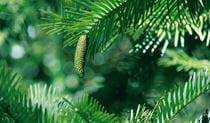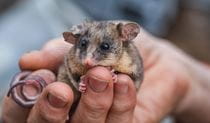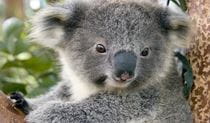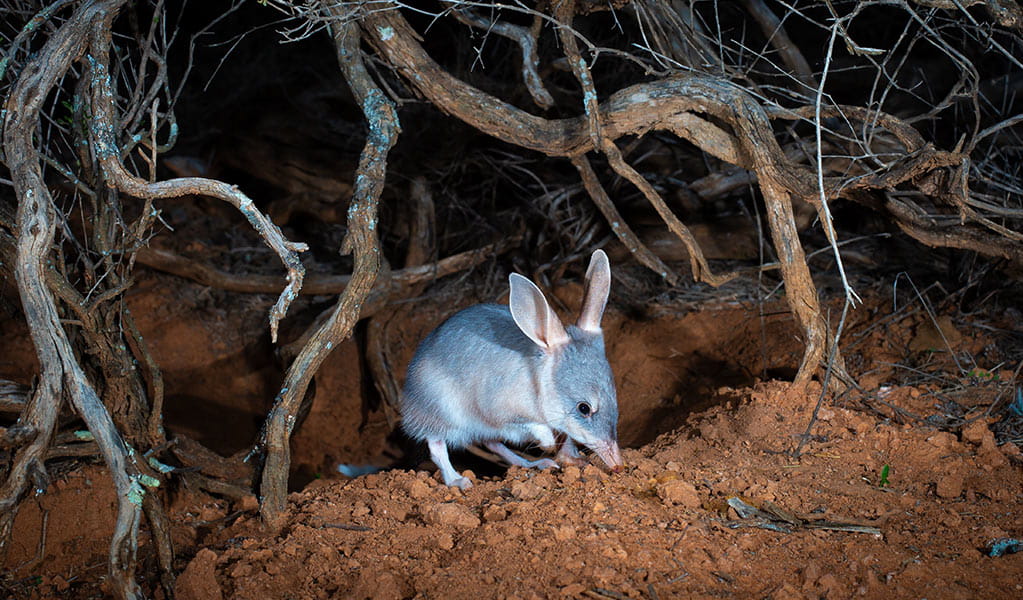Bilby
The greater bilby was once widespread across arid and semi-arid regions of Australia. Today, this threatened native mammal is listed as extinct in the wild in NSW, but reintroduction efforts are seeing bilbies bounce back.
Heading towards extinction
For thousands of years, the greater bilby (bilby) roamed across Australia’s arid, semi-arid and temperate regions. Around 80% of Australia was once bilby country.
The double-whammy of widespread habitat loss due to land clearing, and introduced species like cats and foxes, have devastated bilby populations over the past 100 years.
While bilbies evolved and adapted to native predators, like snakes, quolls, and monitor lizards, they’re easy pickings for introduced hyper-predators like cats and foxes. Competition from rabbits is another pressure facing struggling bilby populations.
Since the early 20th century, the bilby has been extinct in the wild in NSW. But, thanks to recent reintroduction efforts NSW is again home to the greater bilby.
Let me (re)introduce you
NSW National Parks and Wildlife Service (NPWS) is working with Australian Wildlife Conservancy (AWC) and the University of NSW Sydney (UNSW), to establish specially constructed, feral predator-free fenced enclosures.
Perhaps better known as ‘exclosures’, these high-security wild-area management zones exclude 100% of feral predators.
With help from breeding programs, and wild remnant populations in south-west Queensland and north-west Australia, bilbies have successfully been reintroduced to feral predator-free areas in Sturt National Park, Pilliga State Conservation Area, and Mallee Cliffs National Park.
The feral predator-free safe havens include native plants and animals that call these arid or semi-arid habitats home. They also offer opportunities to reintroduce other regionally extinct or endangered species that historically formed a critical part of the ecosystem, including former wild native predators like the western quoll.
4 facts about the bilby
Animal facts
- Common name
- Bilby
- Scientific name
- Macrotis lagotis
- Conservation status in NSW
- Presumed extinct
Ecological engineers
Bilbies are nocturnal animals, spending their days resting in deep spiralling burrows. The deep network of tunnels can be up to 2m deep, providing protection from weather extremes as well as predators. After sunset, they emerge to forage for insects, bulbs, fruit, fungi, seeds and even very small mammals.
Unlike bandicoots, bilbies are expert diggers. A single bilby can excavate several tonnes of soil each year – more than other animals in their habitat. They’re considered to be ecological engineers. Their presence in the landscape can affect the entire ecology, as their digging helps to aerate and increase water infiltration in sun-baked soils, recycling leaf litter nutrients and burying seeds in perfect conditions for germination.
You might also like
-

Feral predator-free areas project
The feral predator-free areas project is one of the most significant ecological restoration initiatives in New South Wales’ history.
-

Assets of Intergenerational Significance (AIS)
Assets of Intergenerational Significance (AIS) are declared to bolster protections for an area with exceptional environmental or cultural values, like...
-

Protecting threatened species in parks
Around 84% of the approximately 900 threatened species in NSW are found in our national parks and reserves. Find out what we're doing to protect threa...
-

Saving our Species conservation program
Today, we're at risk of losing nearly 1000 of our state's native animals and plants. That's why the NSW Government established Saving our Species. It'...





